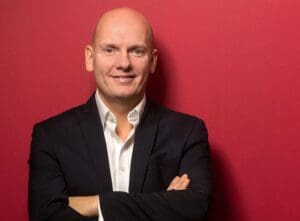Article provided by Greig Johnston, CEO of Vidatec
In my experience, one of the key reasons for this is that project teams fail to understand what end users want, or at least, are prepared to accept and adopt. Everyone should be striving to deliver an exceptional end user experience rather than something that is simply acceptable or usable.

At Vidatec we believe that delivering against the end-user experience involves bringing together in-depth knowledge of how people work and how technology works, then seamlessly combining them to deliver the desired outcome.
Therefore, before embarking on a digital project, I would urge you to consider how an end-user would interact with a company or brand and what kind of relationship they’d have. Make sure that you question, innovate and explore what technology can do – all through the lens of human behaviour, to improve people’s experience of life.
Here are some tips that could dramatically improve your chances of digital project success, through focusing on end-user experience:
UNDERSTAND THAT THE END-USER IS COMPLEX
Firstly, maintain an end-user focus for the lifecycle of your digital project. While this might sound obvious, it’s more difficult than you might think – and that’s because people are incredibly complex. In order to develop a more accurate understanding of people and how they respond to different stimuli – which informs the end-user experience – you need to understand human behaviour.
Take, for example, the often-used illustration of King Charles III and Ozzy Osbourne. When it comes to demographics and market segmentation, both are British, male, white, wealthy, twice married and born in 1948. Yet it’s obvious for everyone to see that the similarities – probably – stop there. So why do companies so often design products and market to people with similar demographics in such a simplistic way?
To consider another example, look at climate activist Greta Thunberg and YouTuber JoJo Siwa. These young women are the same age, have a considerable social media presence, and have been named in Time’s 100 most influential people in the world. Yet, it’s likely that Thunberg’s followers have never heard of Siwa and vice versa. You might even find that Thunberg has more in common with the climate conscious King Charles III!
GET INTIMATE
Understanding the complexities of human behaviour starts by getting intimate. While that might sound a little ‘full on’ for some, intimacy is often the difference between a high-performing team successfully delivering digital projects ahead of the curve – and project failure.
It’s often the case that the pressure to deliver digital projects to a tight schedule is so great that teams jump straight into scoping and resourcing. The danger here is that although you’re all headed in the same direction, you’re carrying different maps of how to get there. This has the potential to lead to conflict, wasted resources, and project failure.
My top tip here is to invest in customer intimacy. If you, your team, and your company can nail getting projects done – and done well – you’re automatically in the top percentage of companies consistently performing at their peak.
UNDERSTAND HUMAN BEHAVIOUR
Truly delivering against end-user experience involves understanding people and then delivering a technology solution matched to the desired digital project outcomes. At Vidatec we use Insights Discovery as the best model for understanding people because it uses a simple methodology that’s easy to learn and retain.
However you choose to develop this deeper understanding of human behaviour, it is guaranteed to help you to focus more sharply on the end-user. It will mean that you won’t try to develop the same products and services for King Charles III and Ozzy Osbourne or Greta Thunberg and JoJo Siwa – unless they’ve asked you to of course! It will also mean that you won’t market to them in the same way – unless you’ve found a similarity after all.
TAILOR COMMUNICATIONS
People absorb and process information differently, which can result in different judgements and decisions being reached – and how they are communicated and shared. Therefore, it’s important to tailor communications to ensure a positive end-user experience. Depending on the situation, the information being shared and an individual’s preferences, how you communicate could be the difference between project success and project failure.
Rather than communicating in a generic ‘corporate lingo’, or a single and rigid brand identity, brands can look at adjusting their communication styles to fit different users, based on their personality types. This concept is being applied through features like Google autofill, Word text suggestions, and weekly insights from your work suite. At Vidatec, we’re using the Insights Discovery model to understand preference and apply the language of colour, while our innovation and end-user focus is taking our UX to the next level.
These tips, if followed and applied, will help ensure your digital project is end-user focused and dramatically improve your chances of digital project success.
Read more on Forbes








